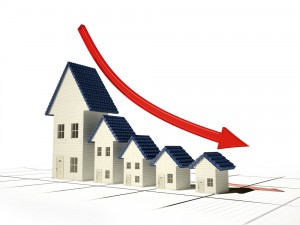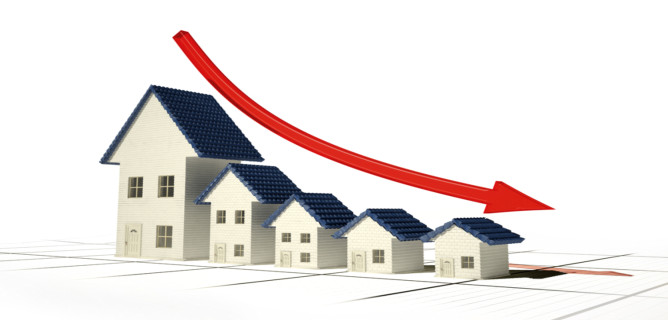 Not satisfied with the appraised value of your new homes? Follow these practical steps for avoiding the dreaded low appraisal.
Not satisfied with the appraised value of your new homes? Follow these practical steps for avoiding the dreaded low appraisal.
1. Get to know your lenders and how they select appraisers
Your best defense against a bad appraisal is to encourage your customers to select lenders that follow best practices in appraiser selection, says Allen Gardiner, SRA, vice president of residential at Plano, Texas-based Jackson Claborn. To do that, you need to get to know your lenders and learn how they select appraisers because appraiser selection is based solely on the lender guidelines. Start the process by having a candid discussion with lenders about your communities, homes and, the market, Gardiner says.
2. Demand that lenders use qualified, designated appraisers.
Contrary to what many builders, real estate agents, and even lenders have been told, lenders are not required to use appraisal management companies (AMCs) or to select appraisers at random, says Steve Linville, director of single-family housing at the National Association of Home Builders. They should be selected based on experience and qualifications.
“You can go to lender and say, ‘I need an appraiser who understands new construction in this county,’” Linville says.
As a builder, you can ask the lender to select appraisers who are:
- Experienced in your market. In appraisal terms, this is known as “geographic competency.”
- Qualified to value new construction.
- Fully familiar with green building and energy efficiency values.
- Willing to meet with the builder to obtain specifics about the house and the neighborhood.
3. Communicate with the appraiser
With the implementation of the HVCC, it was widely reported in the lending and real estate communities that builders and real estate agents could no longer communicate with appraisers. This is patently untrue, Gardiner says.
Builders can, and should, provide appraisers with:
- market and absorption information,
- sales information for the community,
- specifications for the property,
- energy-efficiency features of the house,
- details on what materials were selected and why, and
- buyer response to the material selections.
You can even tell the appraiser the sale price of the house, Gardiner says. “There’s nothing restricting a builder from showing the appraiser the sales price,” he says. “The appraiser is the only one who has to remain unbiased. Don’t be shy. The appraiser is going to find out anyway.”
Finding out that he could talk to appraisers was great news to Marty Mitchell, vice CEO of Rockville, Md.-based Mitchell & Best Homebuilders. He makes a point of giving all the pertinent information to the appraiser in advance, instead of waiting until there’s a problem to present valuable data.
“To sit back and say, ‘I’ve got all this information’ and spring it on the appraiser after a bad report doesn’t help at all,” Mitchell says. “If I were the appraiser, I’d be mad about that. Give it to them up front.”
4. Meet the appraiser at the house
Who better to provide the appraiser with all the information about the house than the builder or his sales agent? And there’s no better place to do that than at the house, where you can point out all the features that add value to the property. Mitchell now requires his sales agents to meet with the appraiser, go through the options the customer has selected, and provide him with a list of houses his firm has sold to date in the community. With only one exception, he says, appraisers have been happy to meet with them. “They need the information,” he says.
Scott Baughman, director of sales and marketing for Pueblo, Colo.-based Premier Homes, says he always volunteers to meet the appraiser at the house.
“Some take me up on it, others will say, ‘If I need you I’ll call you,’” Baughman says. “A few have actually said that would be unethical.”
They’re wrong, Gardiner says. There is nothing inappropriate about it.
5. Challenge inaccurate reports and inappropriate practices, and request a second appraisal when necessary
Appraisers are bound by their code of ethics to provide accurate information in their reports, Gardiner says. If an appraisal contains errors, contact the lender with your concerns and notify them that you are going to discuss the errors with the appraiser.
There’s no rule against a lender requesting a second appraisal if the original contains errors or was conducted improperly.
To make this happen, you need to have all your supporting information prepared. Give the lender all the information you provided to the appraiser, particularly as it relates to appropriate comps that support the sale price. If those were not considered in the appraisal, the appraiser will have to justify that decision.
Mitchell went through this process on a lot with a mountain view that couldn’t be seen from the street, but was in full view of where the house would be sited. His sales agent had asked the appraiser to meet her on the site and was told the appraiser didn’t have time.
“They ended up doing a drive-by appraisal of the lot,” Mitchell says. “They noted a comp having mountain views and pastoral views and knocked the value of our lot because it didn’t have that. If they’d gotten on the lot, they’d have seen we had a better view, but they didn’t take the time. We went through the appeal process with the bank and gave them four or five additional comps. They ordered a new appraisal, which came in at higher than our sale price. At the end of it all, we got the appraisal, but it took 30 to 45 days with a lot of back and forth.”
6. Educate your buyers when they’re making their selections
Hardwood floors, upgraded cabinets, and granite countertops are very popular upgrades with new-home buyers, and they’re more than willing to spend the money to have them in their home. But builders are finding that appraisers often are not giving value for these items. Baughman says that when he has problems with low appraisals, it’s usually because buyers have loaded up their house with luxury choices.
When buyers select these options, he makes sure they understand that it could cause a problem with the appraisal. “If the appraisal comes in low, we ask the buyer if they would like to make adjustments or pay for them in cash,” says Baughman. “Sometimes we meet them in the middle.”
Some builders also are taking the route of requiring buyers to sign an addendum to the contract that says they can’t cancel the contract or request a reduction of the price if they choose those options and the appraisal comes in low.
7. Don’t push the upgrades
In the past, builders made a lot of margin and profit on upgrades, and so they encouraged their sales staff to up-sell. “Builders now are asking their salespeople not to push the upgrades,” says David Crowe, sales manager of Owensboro, Ky.-based Jagoe Homes. “They don’t want to have a difficult conversation with the buyer, who doesn’t usually have the extra money to pay the difference.”
8. Make sure energy efficiency is valued on the appraisal
New houses with energy-saving features save home buyers money every month. They look for it in a home, and it’s a big reason they’ll choose one house over another. If you’re a green, high-performance builder, make sure the appraiser is designated to appraise energy-efficient homes, and provide the appraiser with all the specifications and benefits built into the home’s construction.
This is information that Crowe says he’s quick to point out about his homes, which are all Energy Star-compliant and tested by an independent, third-party company. He’s currently dealing with a case in which the energy efficiency of a new, Energy Star-compliant home was rated as comparable to a 15-year-old existing home. “They’re both listed as ‘typical’ on the energy efficiency,” he says. “That, to me, is a misstatement.”
It may not add as much value as it should on the appraisal, Mitchell says, but for some of his customers, it was enough to cover the cost of the hardwood floors and granite countertops they had selected.
9. Request the appraisal early in the construction process
Crowe learned this one the hard way. His appraisals used to be done as part of the closing process. Not anymore.
“Now we mandate that the plans and the appraisal be done between two to three weeks of the start of construction. They order it and the appraiser has about two weeks to get it back to the management company. We know in the very early stages of construction that we may have a problem, versus building a home and getting notified two days before closing that we’re $15,000 short of the sales price.”
Baughman asks for appraisals early on if he has a house that he thinks will run into problems. “None of the appraisers like to do appraisals based on plans and specs,” he says, “but they will do it.”
10. Put your houses on the MLS
In many markets, sales of new homes aren’t listed on the Realtors’ Multiple Listing Service. That’s unfortunate because the MLS is a prime resource for appraisers looking for comps. “The more data the appraiser has, the better,” Gardiner says. “I think putting the listings on the MLS is a great help.”
Just make sure the information you input is accurate. “Typically, the builder-entered MLS data is some of the least reliable data from what I’ve observed,” Gardiner says. “It’s entered by a sales agent who doesn’t work much with MLS. A lot of times the sales price isn’t right. They put in the base price instead of the sale price with upgrades. It’s very common. Just make sure there’s some quality control.”
If that’s not an option in your market, create a fact sheet on each of your houses with information that corresponds with the information typically included in an MLS listing. Put it in a book or on a flash drive and make it available to appraisers.
Source: HousingZone.com
Courtland Building Company would love to help you plan your green home, call us today: (281) 932-4494
Visit our website: www.courtlandbuildingcompany.com Follow Us on Facebook – Twitter – LinkedIn


